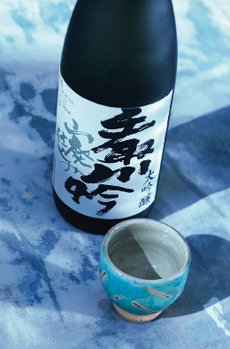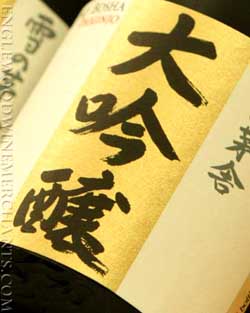Click on a letter to go to the appropriate glossary page: a b c d e f g h i j k l m n o p q r s t u v w x y z This glossary is protected by copyright and cannot be
Infused Saké: Currently a product unique to the United States, where it is used for innovative cocktails, or drunk neat like infused vodka. Flavors such as yuzu, honey, ginger, lemongrass, pomegranate and asian pear, are added to the saké during the blending process. As with vodka, some restaurants and cocktail lounges infuse their own sakés. Commercial infused sakés tend to be lower in alcohol content than classic sakés. Jiu: Pronounced joe, the Chinese word used to describe the entire category of alcoholic beverages made from rice. Saké is one beverage in this category. Jizake: A term that usually refers to saké from smaller rural breweries, the antithesis of mass-produced saké. FLAVOR PROFILE: Subtle nose, assertive, higher-acid, full-flavored, earthy notes, good finish. See also honjozo. Kobo: The yeast used to make a seed mash called moto, in a room called the moto-ba. Kobo propagates itself by feeding on the koji rice. The propagation of koji and kobo are the most critical processes in brewing saké. Specialists called koji-ya and moto-ya supervise these processes. Koji: The unique enzyme required to make saké. Koji convert starch to glucose and are responsible for saké’s aroma and taste. Koji mold is cultivated on a bed of steamed rice, and the mold eats its way into the rice. The enzymes in the mold break down the rice’s starch molecules into smaller sugar molecules that are food for the moto required to brew the saké. Kojimuro: The room in which the koji conversion takes place (for up to two weeks). The temperature of the kojimuro is always kept at 86° Fahrenheit (30° Celsius). The moisture of the room is also controlled carefully in order to stimulate the multiplication of the koji. This is one of the most critical processes in saké-making. Kura: A sakéry, or place where saké is produced. Saké is very sensitive to temperature and can be brewed only during the winter. In order to sell saké throughout the year, brewers store saké in the kura, where the temperature change is relatively constant. In the old days, saké was stored in wooden tanks; but today, it is stored in enameled porcelain or stainless steel tanks.
Continue To Page 3: Terms M Through R
|

The Nibble Blog
The Latest Products, Recipes & Trends In Specialty Foods
The gourmet guide you’ve been waiting for. New food adventures are served up daily. Check it out!

Food Glossary
Our Food Directories Are "Crash Courses" In Tasty Topics
Your ultimate food lover’s dictionary packed full of information and historical references. Take a look!

Food History
Let the journey begin!
Learn about the history Of 1,000+ Favorite Foods & Beverages Let’s explore the history of your favorie goods together.Let the journey begin!


